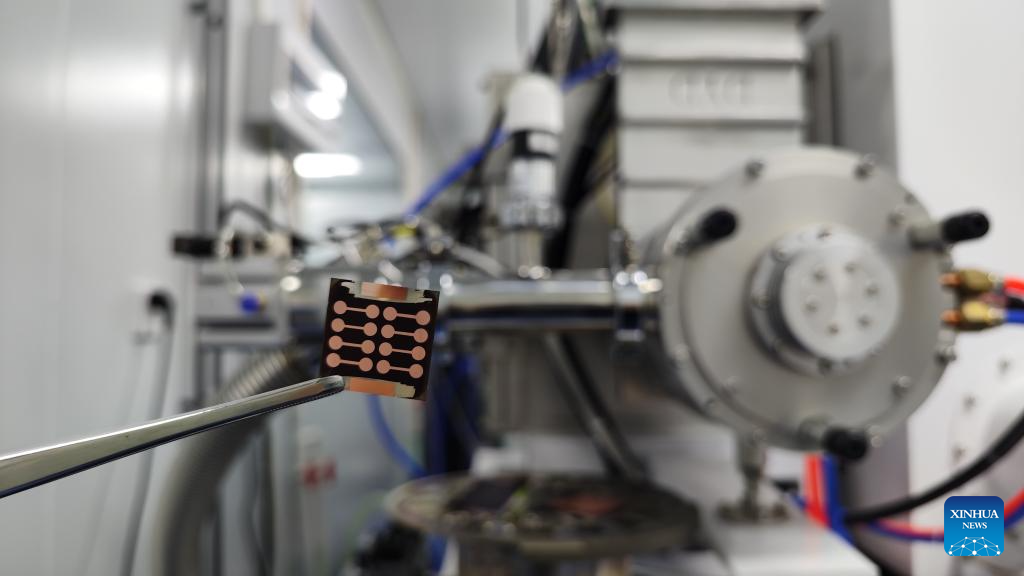


This photo taken on Oct. 25, 2025 shows a perovskite solar cell, developed by researchers from Nanjing University and other institutions, in Nanjing, east China's Jiangsu Province. A joint research team in China has developed a new method that, for the first time, has enabled a key type of advanced perovskite solar cell to surpass the 30 percent efficiency threshold. (Xinhua)
NANJING, Oct. 28 (Xinhua) -- A joint research team in China has developed a new method that, for the first time, has enabled a key type of advanced perovskite solar cell to surpass the 30 percent efficiency threshold.
The groundbreaking research, led by Tan Hairen, a professor at Nanjing University, and Chang Chao, a professor at the National Sciences Institute of Innovation, was published on the Nature website on Tuesday, Beijing time.
The efficiency of perovskite cells has been hard to improve, largely because it was difficult to precisely track and control electric charges, or carriers without damaging the cells, according to Tan.
To break the bottleneck, researchers led by Chang used a non-destructive detection technique based on terahertz radiation, which acts like a precise scanner, allowing scientists to observe charge movement in real time without interfering with the cell's operation.
Using this method, the team identified that a significant amount of energy was being lost at a key interface inside the cell.
In response, Tan took the lead in designing a special "dipolar passivation" layer, which, functioning like an urban one-way street, directs charges efficiently and prevents them from being wasted.
The terahertz analysis confirmed that the strategy successfully reduced energy loss, boosting charge mobility by over 68 percent and allowing charges to travel much farther.
A third-party evaluation found that the new solar cell achieved a certified efficiency of 30.1 percent, marking the first time this type of cell has surpassed the 30 percent barrier, said Lin Renxing, an assistant professor at Nanjing University and the first author of the article.
"The research provides a clear and practical new strategy for designing more efficient and affordable solar cells in the future," Lin added.
点击右上角![]() 微信好友
微信好友
 朋友圈
朋友圈

请使用浏览器分享功能进行分享
